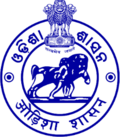| High Court of Orissa | |
|---|---|
| ଓଡ଼ିଶା ଉଚ୍ଚ ନ୍ୟାୟାଳୟ | |
| | |
 | |
 Interactive map of High Court of Orissa | |
| 20°27′54″N85°51′32″E / 20.4650°N 85.8589°E | |
| Established | 26 July 1948 |
| Jurisdiction | Odisha |
| Location | Cuttack, Odisha |
| Coordinates | 20°27′54″N85°51′32″E / 20.4650°N 85.8589°E |
| Composition method | Presidential with confirmation of Chief Justice of India and Governor of respective state |
| Authorised by | Constitution of India |
| Appeals to | Supreme Court of India |
| Judge term length | Mandatory retirement at 62 years of age |
| Number of positions | 33 (24 Permanent + 9 Additional) |
| Website | www |
| Chief Justice | |
| Currently | Harish Tandon |
| Since | 26 March 2025 |
| This article is part of a series on |
| Odisha |
|---|
 |
| Governance |
| Topics |
| Districts Subdivisions |
| GI Products |
The Orissa High Court is the High Court for the Indian state of Odisha.
Contents
- History
- List of Sitting Judges in Orissa High Court (Seniority Wise)
- List of Chief Justices of Orissa High Court
- Judges elevated to Supreme Court of India
- Currently serving
- Former Judges
- References
- External links
The then Bengal Presidency was a vast province including present day Assam, Bihar, Jharkhand, Odisha and West Bengal. It was difficult to administratively manage such a vast area, inhabited by people speaking different languages and having different traditions. Administrative exigencies required separation of such areas which originally did not form part of Bengal. So, the new province of Bihar and Odisha was formed on 22 March 1912. However, the said new province of Bihar and Odisha was under the jurisdiction of the Calcutta High Court.




































